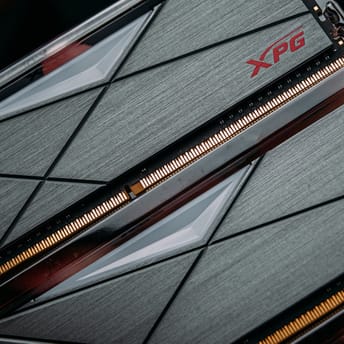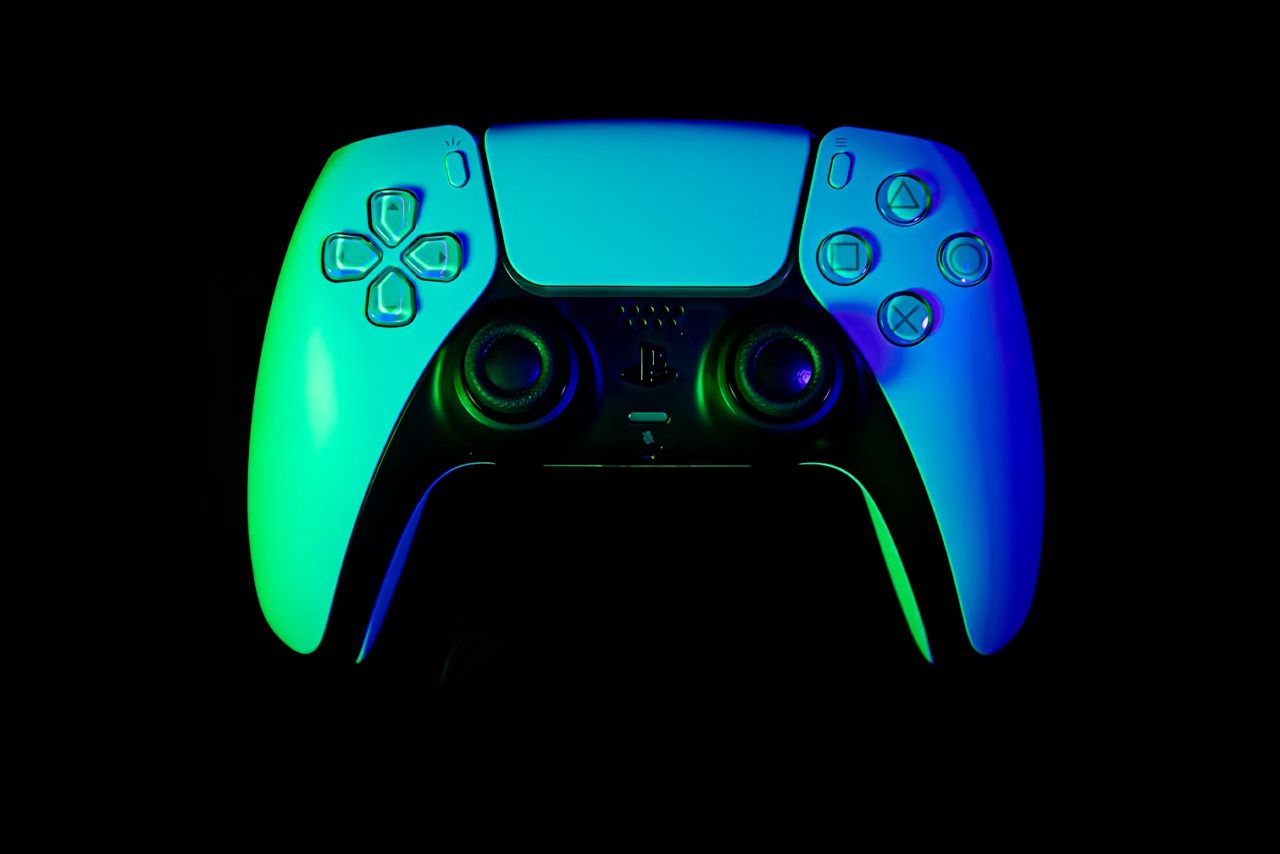
From One Button to Next-Gen: The Rise and Evolution of the Gamepad
|
|
Today, with technology evolving rapidly and the video game industry offering VR, AR, and other innovative methods to interact with games, the gamepad remains the classic interface that fulfills most players’ needs. In this article, we’ll explore how the gamepad first took shape and later evolved with new features, why it remains so convenient, and what makes it an iconic element of gaming.
Table of Contents
- Introduction
- The Gamepad is More Than Just a Controller
- A Brief History of Gaming Controllers
- How Gamepads Got Physical and Beyond
- Gamepad and Keyboard/Mouse Are Not the Competitors
- Gamepad as Extension of the Player
- Game Design for the Gamepad
- TL;DR
Introduction
If you think about it, the shape of a modern gamepad surprisingly resembles devices from many years ago. Even with better materials, more buttons, and brand-new electronics—it has remained the same. This form factor was established back in the era of Sega Genesis and Nintendo Entertainment System (NES) in the late 1980s and has stayed remarkably consistent since Dual Analog Controller, released by Sony in 1997.
Why does the industry stick to this concept? The gamepad hasn’t stuck around just because of nostalgia or inertia—it’s the result of years of tweaking, testing, and growing alongside game design. We are used to holding a compact device that lets us control a character and camera while performing various interactions with a slight movement of fingers. This habit has formed over decades and has gone through many iterations, yet the basic principles of control are still based on the same core idea.
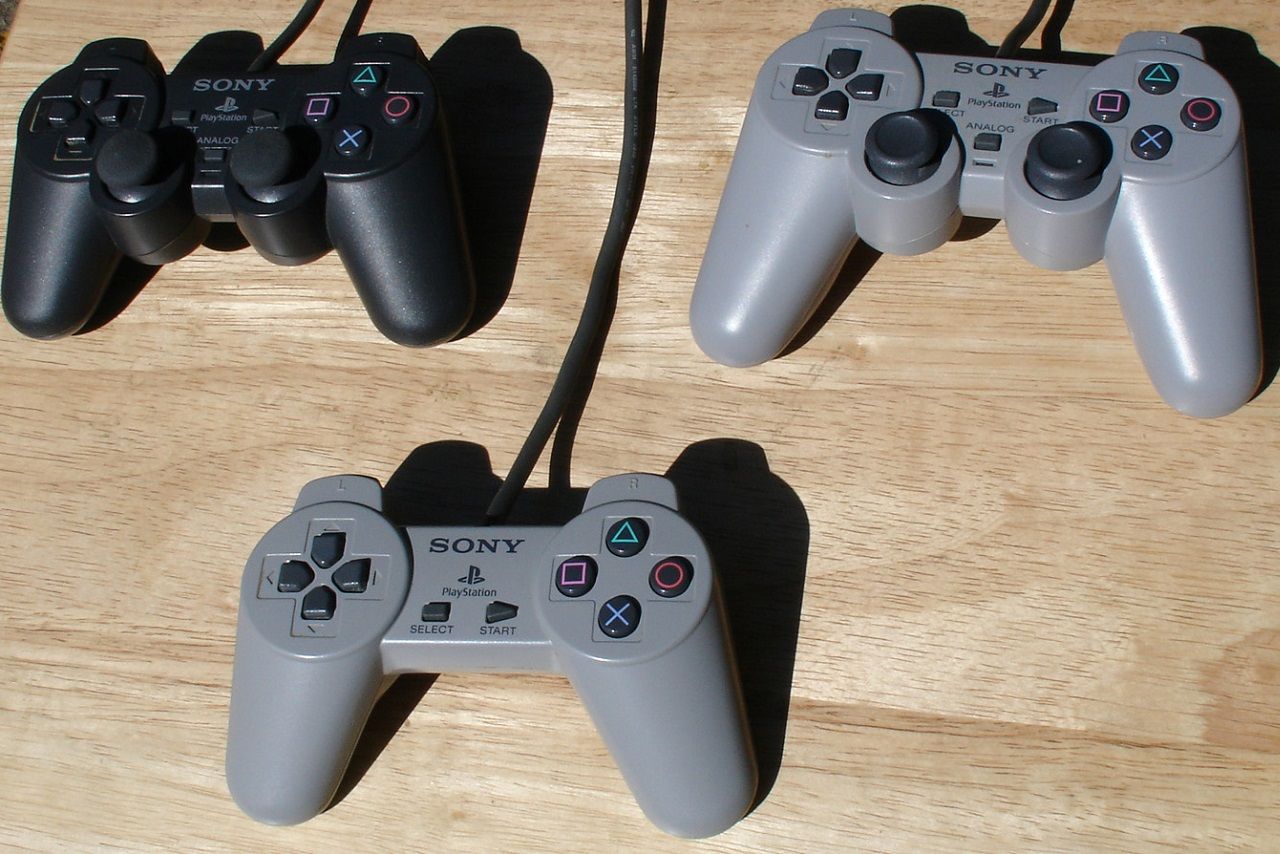
The Gamepad is More Than Just a Controller
For many gamers, the core of the experience isn’t just pressing buttons, but also the feeling of immersion in the game world. Holding a gamepad creates a unique link, every flick of the stick or press of a button is immediately reflected, creating the illusion of direct control.
In this way, the gamepad acts as a bridge between our reality and the virtual world. In fighting games (Tekken, Street Fighter, Mortal Kombat), you can feel the rhythm of combat through precise inputs—with vibration amplifying the weight of every blow. Racing games (Forza, F1, Need for Speed)—the resistance of triggers and the responsiveness of sticks simulate the sensation of driving. Thanks to haptic feedback, it all can be felt through the gamepad.
And this can also be used in game design! In shooters (Gears of War, Helldivers), for example, the controller might vibrate more intensely as your magazine runs low—adding both tension and useful info without a single word.
The gamepad’s intuitiveness comes from the way it’s built. Thumbs rest naturally on the sticks and face buttons, while the other fingers wrap around the grips. Index fingers fall into place on triggers and bumpers. It’s an effortless setup—everything you need is within reach, without thinking—sit back and relax.
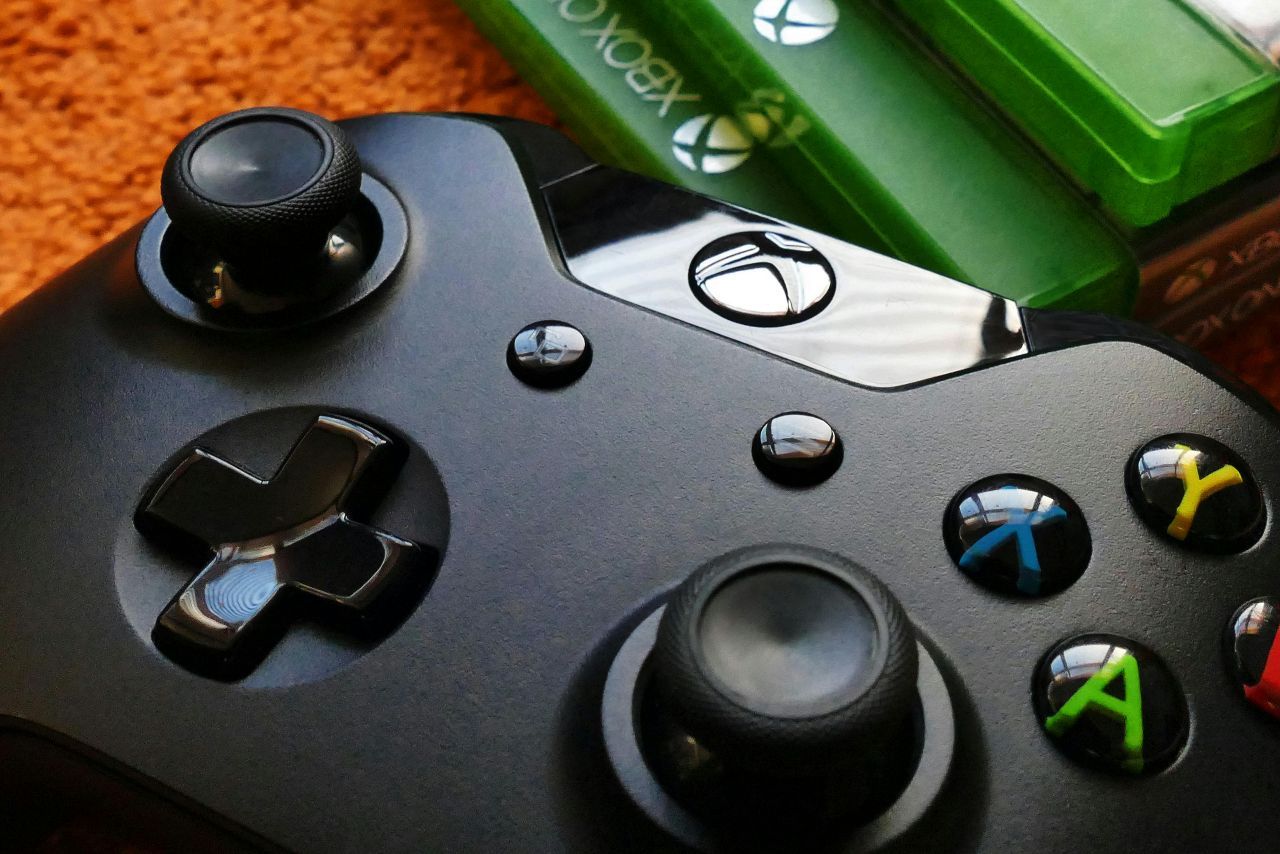
A Brief History of Gaming Controllers
To understand how the modern form of the gamepad came to be, it’s useful to look at the main stages of different controllers’ evolution—from the early Atari and NES models to DualSense.
Early years (Atari 2600, ColecoVision)
In the 1970s and early 1980s, controllers were simple paddles and joysticks. The Atari 2600 featured a single stick and one button—already a big step forward compared to Pong arcade cabinets. Their simplicity reflected the nature of early games—primitive graphics and fast arcade-like gameplay. Other systems experimented with extra buttons and number pads but didn’t stray far from the core idea of a single stick and minimal inputs.
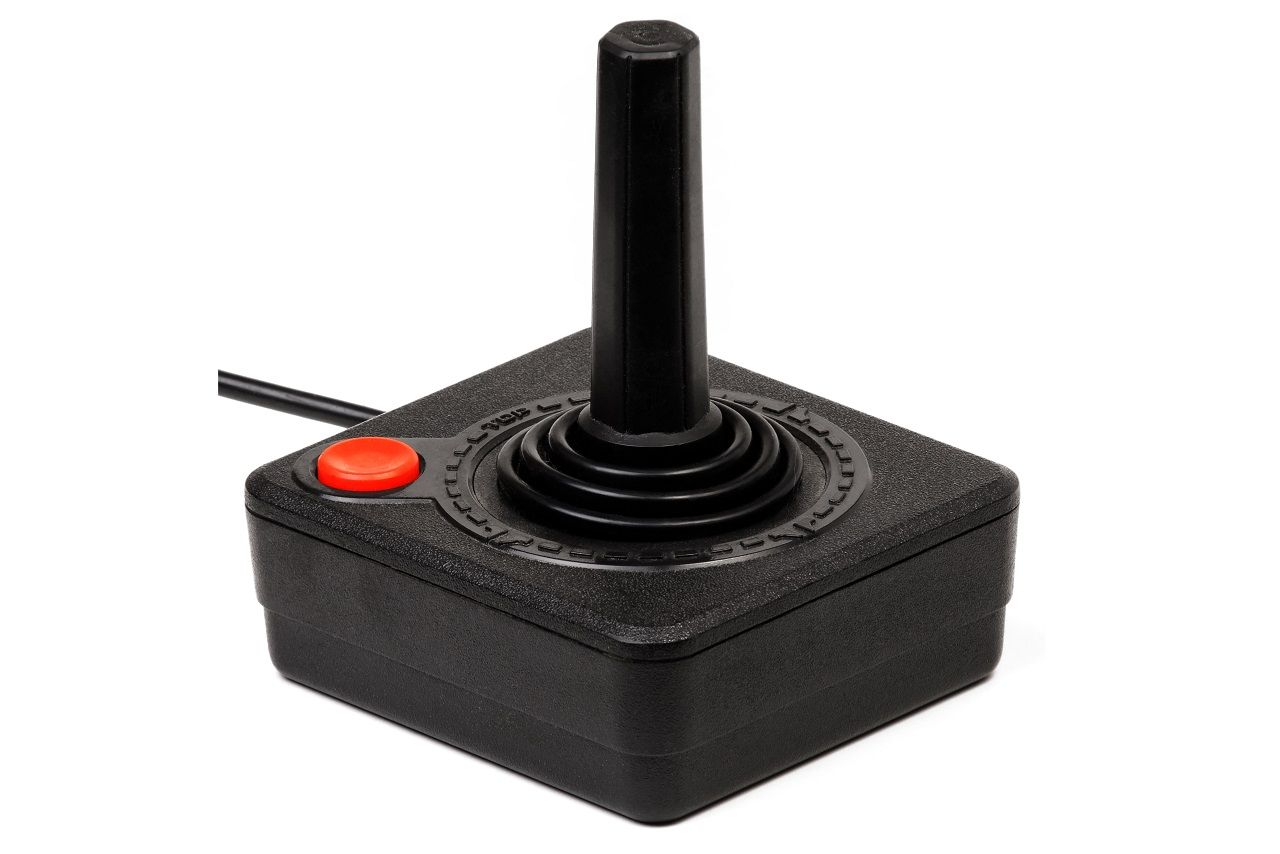
The 8-bit and 16-bit era (NES, Sega Genesis, SNES)
With the release of the NES came the now-iconic directional pad (D-pad). A better alternative to bulky joysticks, it enabled more precise control in 2D space. It was so effective that it still appears on most modern controllers.
The next step was expanding functionality—the Sega Genesis introduced three face buttons (later upgraded to six), while the Super Nintendo Entertainment System (SNES) pioneered the use of shoulder buttons. Ergonomics improved; part of the essential layout of the modern gamepad (D-pad, face and shoulder buttons, and a two-handed grip) was in place.
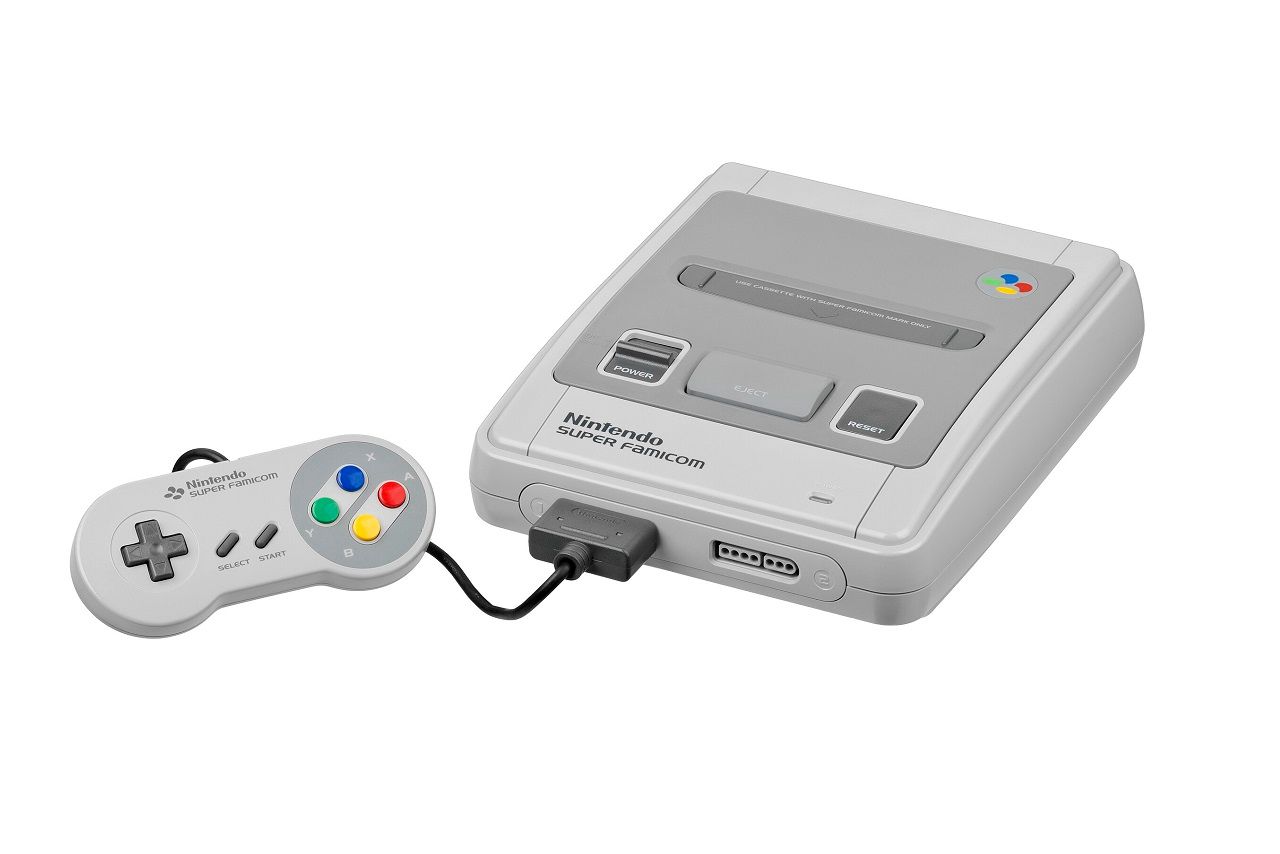
The 3D revolution (PlayStation, N64, Dreamcast)
The 1990s brought a colossal shift with the establishment of 3D graphics in games. Nintendo 64 (N64) introduced the first functional analog stick, allowing players to be in full control of movement speed and direction. N64 also had an additional device to add vibration to its controller. Sony initially stuck with a D-pad-centric controller but soon released the Dual Analog Controller, which added two analog sticks, and a bit later, the DualShock with built-in vibration—forever changing the gaming experience.
Meanwhile, Sega’s Dreamcast controller also brought fun (but questionable in its usability) innovation. It featured an analog stick, analog triggers, and the visual memory unit (VMU)—a detachable memory card with a screen, blending save storage with the concept of using multiple screens. This screen usually displayed the game’s logo, health bar, or ammo count. Well, the form factor wasn’t perfect, and the idea of a second screen was ahead of its time.
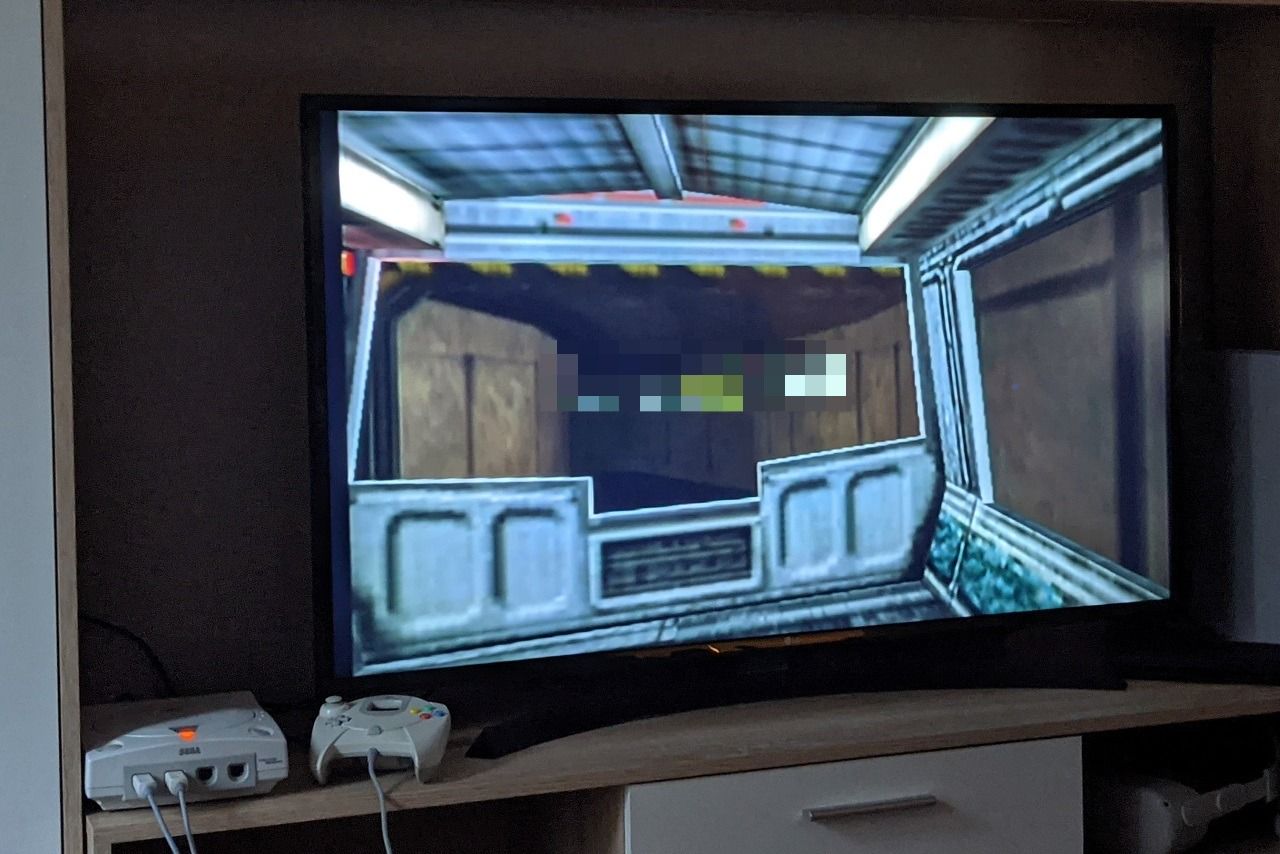
Modern gamepads and controllers
From that point on, the form factor continued to evolve. Microsoft popularized asymmetrical analog stick placement and made better triggers. Nintendo kept experimenting (GameCube’s unique button layout, the Wii Remote’s motion controls, and, eventually, the Switch Joy-Con), committed to innovation.
Sony, on the other hand, continued refining the DualShock line all the way to the DualSense. Adaptive triggers, advanced haptic feedback, gyro sensors—everything for the perfect immersion. The Switch Pro from Nintendo blended many of the different features into a familiar layout with solid ergonomics and responsive buttons.
Today’s gamepad is the product of decades of experimentation and iteration. Despite its visual similarities to the controllers of the 1990s, it’s now a sophisticated piece of hardware—packed to the brim with additional systems and features—with a singular purpose to bring the player closer to the game.
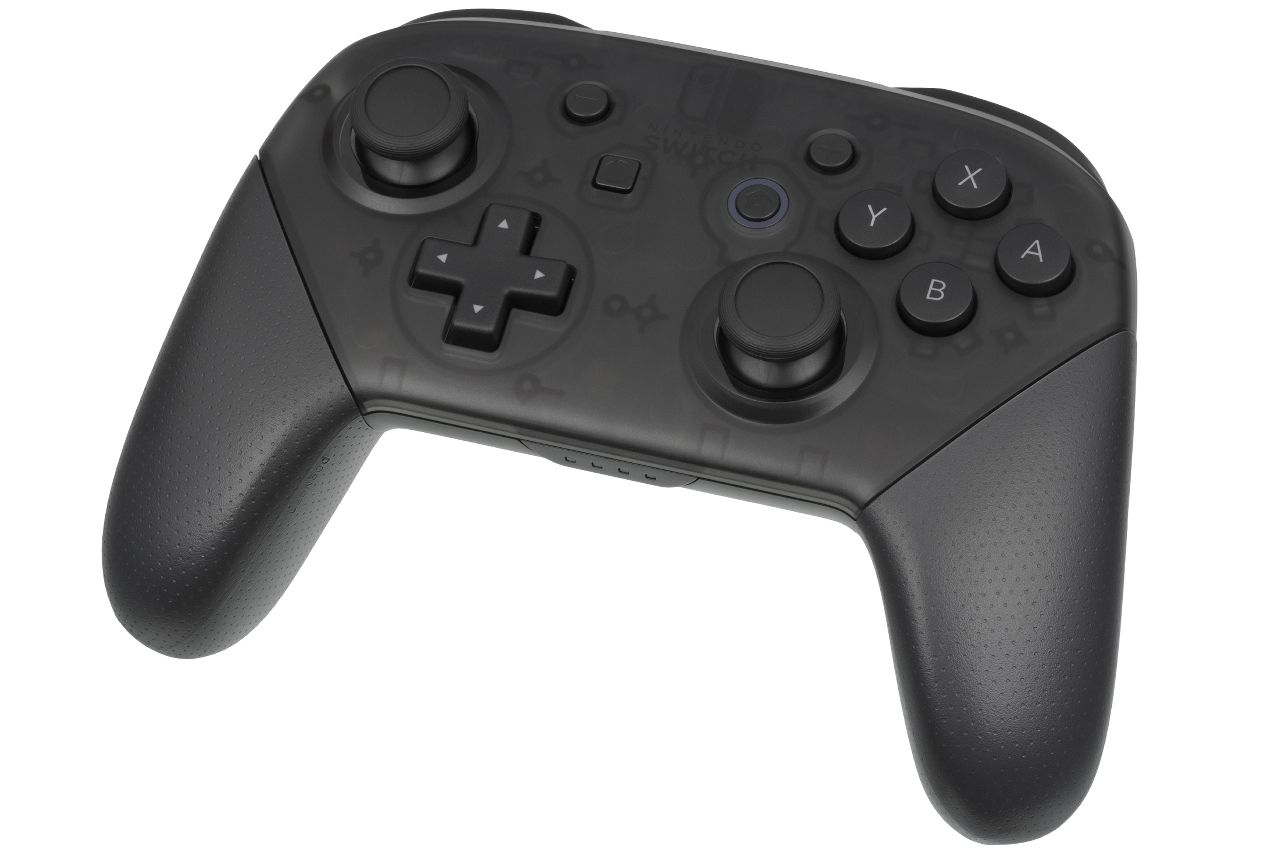
How Gamepads Got Physical and Beyond
The key aspect of the modern gamepad is the set of technologies it uses to interact with the player. It’s not just about pressing buttons—it’s also about getting physical feedback.
Vibration
Vibration (or rumble) was first made widely available through the N64 Rumble Pak (an external accessory to the N64 controller). The idea proved to be potent, so later Sony introduced the DualShock, building vibration motors directly into the controller. Games started to feel more tangible—you could physically sense explosions and gunshots or collisions. This tactile feedback helped create a deeper sensory connection to the game world, as your brain received a physical signal from the virtual action.
Analog sticks
The transition from D-pad to analog sticks marked a shift from digital input (up/down/left/right) to analog input (degrees of tilt and direction)—this gave players far greater control in 3D environments. In action games, for instance, you could smoothly adjust the running speed or the angle of a turn. Analog sticks made movement feel more organic and responsive—characters walked or sprinted depending on how far the stick was pushed.
Haptic feedback
In modern controllers, haptic feedback has gone far beyond simple rumble—it can simulate textures, pressure, or subtle surface differences. Walking across gravel or pulling a rope, you don’t just see it on the screen—you feel it in your hands. This level of sensory realism moves the line between physical and digital even further, offering one of the most immersive innovations in controller tech to date.
Gyroscopes, touchpads, adaptive triggers
Newer generations of gamepads pushed things more. The DualShock 4 introduced a touchpad—a gesture-based surface that opened the door to new types of interaction (unfortunately, underutilized in most games for different reasons). Nintendo’s Joy-Con and Pro Controller integrated gyroscopes, allowing players to aim or steer simply by tilting the controller.
Then came the adaptive triggers of the DualSense—another leap forward in tactile realism. Triggers can now dynamically resist your input depending on actions in the game (drawing a bowstring, squeezing a brake, etc.), which makes various actions feel physically different. Now this is not just the feedback—it’s a conversation between the game and your hands.
Voice control
However, not all innovations stuck. Over the years, a few attempts were made to integrate voice control into gaming—from headset commands in Tom Clancy’s EndWar to voice-activated menus on Xbox Kinect or voice commands in Dead Space 3.
While intriguing in concept, these systems were simply awkward in practice. Unlike the intuitive nature of button presses or analog input, voice commands require clear speech and quiet environments, also they often disrupt the flow of gameplay. For most players, talking to their controller or console just never felt as natural as holding it—so for now, voice control faded into the background as a novelty, instead of becoming another core feature.
All these technological experiments and advancements have transformed the gamepad from a simple input device into an expressive tool.
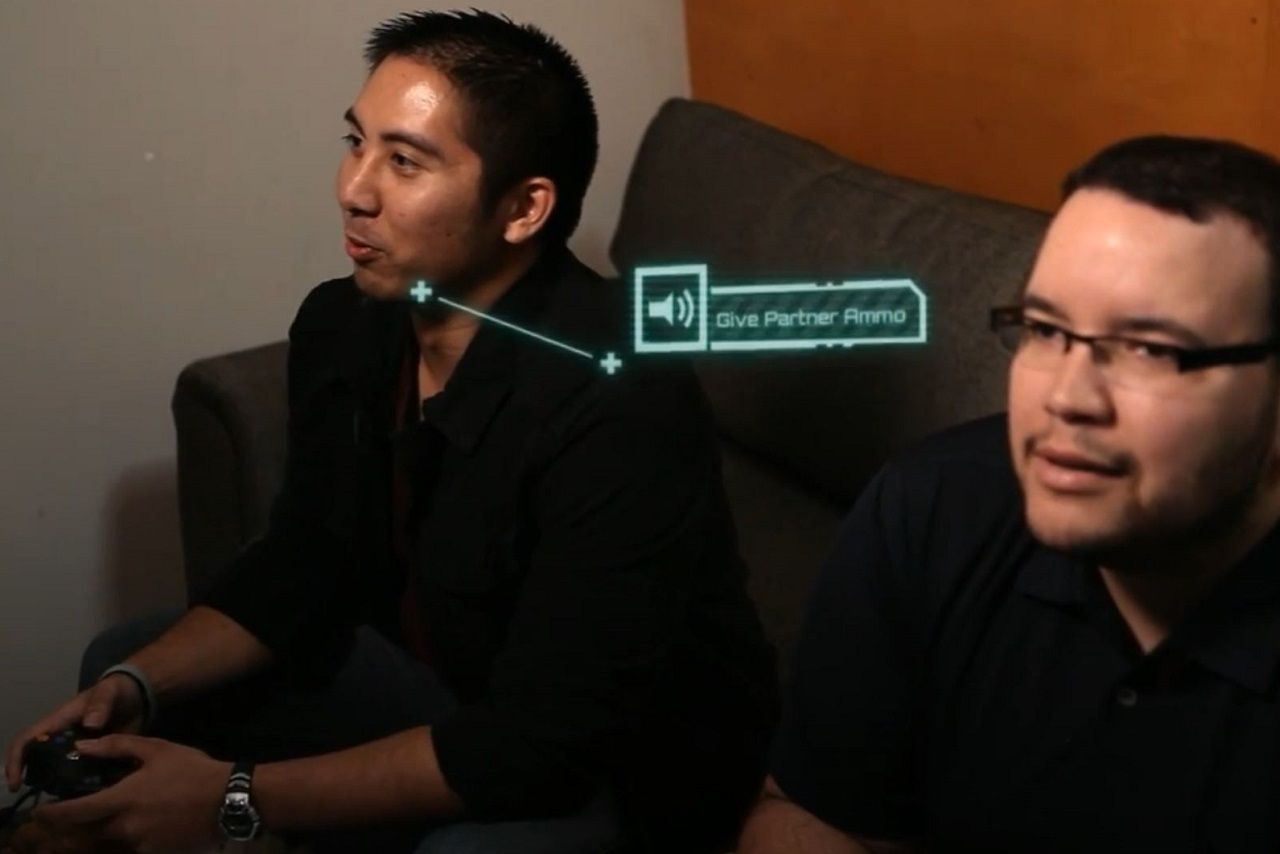
Gamepad and Keyboard/Mouse Are Not the Competitors
There’s a long-running debate about which way is better: a gamepad or a keyboard and mouse. But in reality, these tools aren’t rivals—they’re designed for different things, have different strengths, and there’s no need to pit them against each other in some imaginary war.
In competitive shooters (Valorant, Apex Legends), the mouse provides unmatched aiming precision, while the keyboard offers fast access to a wide range of hotkeys and inputs. But when it comes to souls-likes or fighting games, a gamepad feels more natural and comfortable—especially over longer sessions. Also, in many shooters, aim assist helps bridge the precision gap for gamepads.
Ergonomics plays a major role, too. At a desk, the standard keyboard and mouse setup makes perfect sense. But when you’re relaxing on a couch in front of a large TV, a gamepad becomes the obvious choice. Consoles are built around this experience—most of them can handle everything from gaming to navigating menus and streaming apps with just the controller in hand.
There’s no universal best option here. Each input method shines in its own context and offers a distinct user experience—why not just use both?
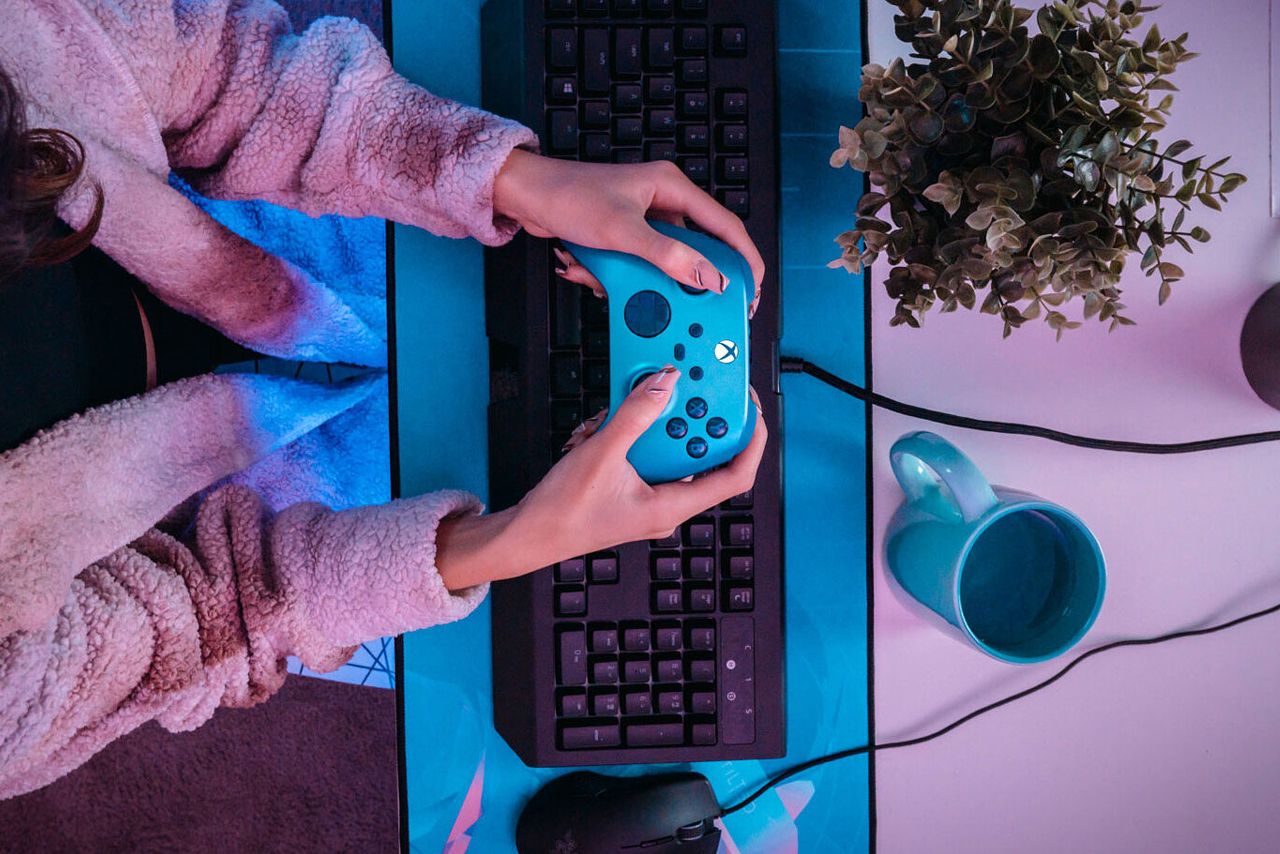
Gamepad as Extension of the Player
Our hands are naturally shaped in a way that makes the gamepad feel like it belongs there, the two-handed grip feels instinctive. After all, Sony, Microsoft, and Nintendo have spent decades refining their controllers to fit the human hand.
But it’s not just about ergonomics, it’s also about habit. Some of us grew up holding controllers, from Sega Genesis or NES to the PlayStation and Xbox. Muscle memory is formed early—the moment we see the familiar shape of a gamepad our hands already know what to do. And, over time, this familiarity becomes second nature, something that we don’t have to think about, just feel.
While gamepads are built to feel natural for most people, not everyone interacts with them in the same way. That’s where inclusivity comes in: the Xbox Adaptive Controller is a powerful tool, a product of thoughtful design for accessibility. With a wide range of compatibles and customizable layouts, it allows players with limited mobility to enjoy games on their own terms.
In this sense, the gamepad becomes more than just a controller—it becomes a universal interface, adaptable to nearly any hand that wants to play.
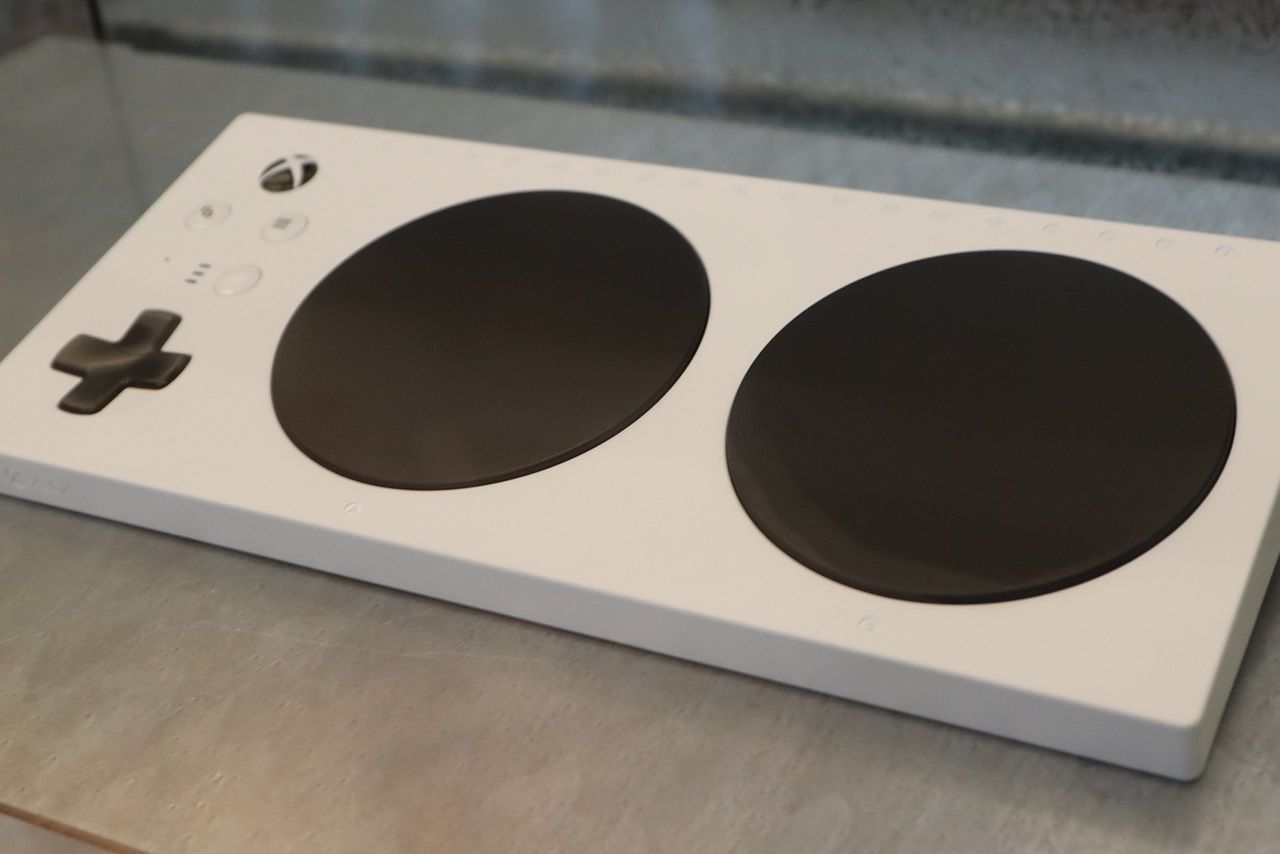
Game Design for the Gamepad
Modern games are often designed from the ground up with gamepads in mind. This is especially evident in some games and genres, where the physical layout and feel of a controller are deeply woven into the gameplay itself.
Action-adventure games
Take God of War: Ragnarök, for instance. Controlling Kratos’s axe feels intuitive not just because of smooth animations, but because the button mapping is so well thought out. Every swing, block, and ability activation is placed where your fingers naturally rest. The combat system flows effortlessly, and the layout on the DualShock translates easily to other modern controllers—a sign of thoughtful, controller-first design.
The Legend of Zelda: Tears of the Kingdom on the Nintendo Switch offers a different kind of mastery. The game combines stick movement with motion-controlled aiming, using the gyroscope to fine-tune shots with a bow. Even complex actions—switching weapons, parrying, sprinting, gliding—become second nature, thanks to a control scheme that aligns with how your hands naturally move.
Fighting games
Another genre where gamepads shine. Character inputs are often built around directional combinations that feel natural on a D-pad or analog stick. Sure, you can play on a keyboard—but most competitive players would disagree—only an arcade stick might beat a gamepad, and definitely not a keyboard.
Shooters
While analog sticks can’t match the raw precision of a mouse, many console shooters implement aim assist—subtle (and sometimes not so subtle) targeting adjustments that help compensate and preserve fluidity. Far from being a crutch, it’s a deliberate design choice that recognizes the physical nature of stick input and works with it to create a responsive experience. And it also comes out as an accessibility feature.
All of these examples highlight one thing: great game design embraces the strengths of the gamepad. From movement to combat to environmental interaction, the best games treat the controller not as a limitation, but as a creative canvas—mapping mechanics onto muscle memory, and turning input into instinct.
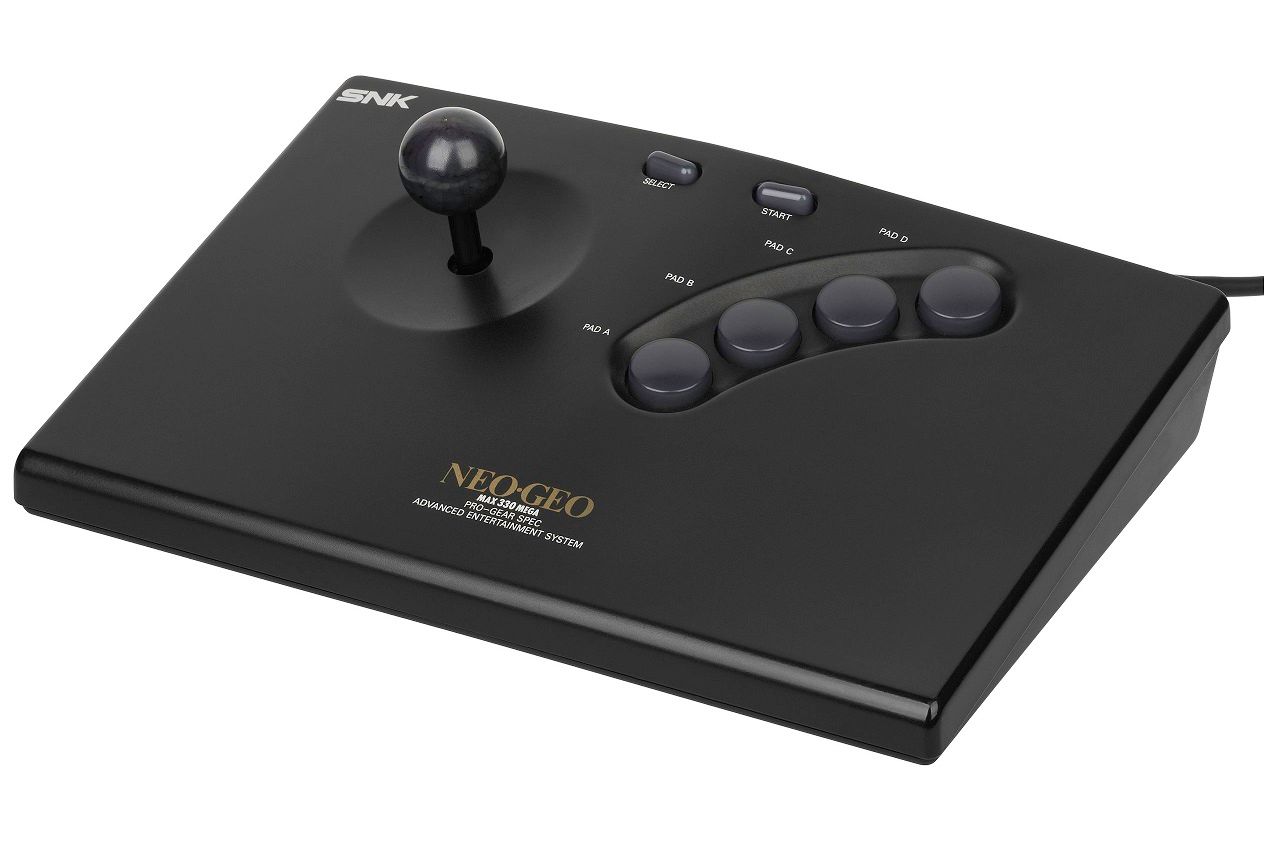
TL;DR
Virtual reality is growing rapidly. VR headsets now come with motion-tracking controllers that follow your hands in 3D space. AR technologies aim to blend physical and digital worlds. But even as these technologies advance, the gamepad remains deeply relevant—not just for practicality, but for the kind of immersive experience it enables.
The gamepad provides its own kind of presence—one built on muscle memory, haptics, physical feedback, and years of design refinement. It’s a different kind of immersion, but no less powerful. Even as gaming changes and evolves, we’ll still reach for that same gamepad. It just works.
In the end, the gamepad remains one of gaming’s most enduring icons. It has grown from simple one-button sticks to sophisticated input devices packed with sensors, rumble motors, and adaptive triggers—all without losing its core identity. It’s not just convenient—it feels right.

